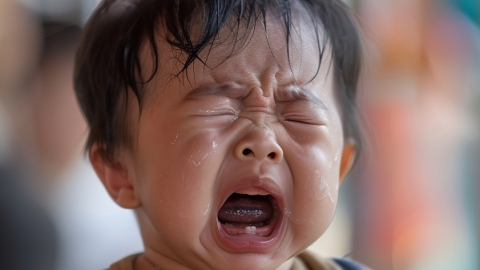How to manage a low-grade fever in a two-year-old child
Generally speaking, a low-grade fever refers to a mild fever. A low-grade fever in a two-year-old child may be related to incomplete development, strenuous activity, indigestion, bronchitis, pneumonia, or other factors. Timely treatment based on the underlying cause is necessary, such as general treatment or medication. If there are any discomfort symptoms, it is recommended to seek medical attention. The specific analysis is as follows:

1. Incomplete Development
The body temperature regulation center of a two-year-old child has not fully developed, making it susceptible to changes in the external environmental temperature. When the weather changes, the child's body temperature may rise accordingly, resulting in a mild fever. This is a normal occurrence and usually does not require special treatment.
2. Strenuous Activity
If a child has engaged in strenuous physical activity, such as running, jumping, or chasing before developing a fever, it may accelerate metabolism and increase body temperature, leading to a mild fever. This can be relieved by stopping the activity and allowing appropriate rest.
3. Indigestion
Consuming excessive amounts of food or eating difficult-to-digest foods can overload a child's gastrointestinal system, potentially generating excess heat and increasing body temperature. This may be accompanied by symptoms such as abdominal pain and diarrhea. Treatment may include medications such as Lactobacillus tablets, Smecta, or Simethicone emulsion, under a doctor's guidance.
3. Bronchitis
When a child's immunity decreases, viruses or bacteria may invade the bronchial mucosa, causing an inflammatory response that results in a low-grade fever. Symptoms may include coughing and rapid breathing. It is recommended to follow medical advice and promptly use medications such as Ambroxol and clenbuterol oral solution, nebulized combination ipratropium bromide solution, or Chai Hu Shu Gan granules.
4. Pneumonia
Pneumonia is a disease spread through droplets and is primarily caused by bacterial or viral infection. When the body experiences an inflammatory response, body temperature rises accordingly, causing the aforementioned discomfort. Symptoms may include chest tightness, coughing, and phlegm production. Timely treatment with medications such as Pneumocough Syrup, Pediatric Paracetamol Chlorpheniramine Maleate Granules, or Cold and Fever-Relieving Granules should be followed as advised by a doctor.
As the causes of fever in children vary, treatment methods differ accordingly. Therefore, it is recommended to promptly identify the underlying cause and formulate an appropriate treatment plan. Additionally, it is important to manage the child's diet reasonably and avoid excessive intake of greasy or difficult-to-digest foods.






